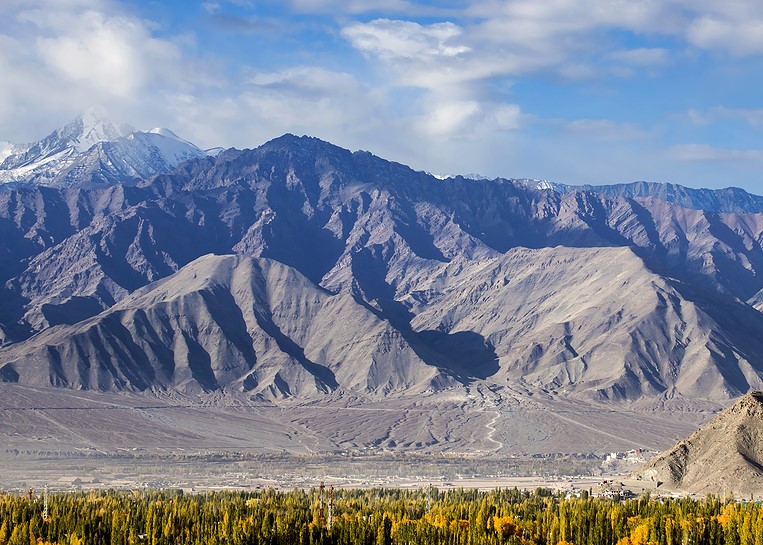News
Natural Engineering Solutions Used To Preserve Water In Ladakh
To help preserve water in the Ladakh region of northern India, a resource that is becoming increasingly scarce because of accelerating glacier shrinkages, local villagers are building ice stupas, vertical water storage structures that can be used for irrigation.
In order to construct these stupas, a geodesic dome has to be built using tree branches, which is then covered with plastic fish netting. Water is then piped from a higher altitude spring or source of glacial meltwater into a vertical pipe, known as a wand, through the central axis of the dome, Geographical reports.
A nozzle is then attached to the top of the wand, with water sprayed above the dome. This then freezes as the drops fall and touch the stupa. As it grows, new lengths of pipes are added, which raises the nozzle.
The Ladakh region itself is incredibly dry, with an average annual rainfall of just 50-60mm. Like many other mountainous landscapes, it has seen severe glacier shrinkage over the years, which has drastically reduced water supply, particularly for remote communities that depend on glacial meltwater for irrigation in the spring.
Ice stupas themselves are, in fact, a Ladakhi invention and, as the news source observes: “The Ladakhi ice stupa engineers show outstanding skill and resourcefulness. At this stage, perhaps the main impact of ice stupas is that they have helped develop awareness of, and the need to actually do something to combat rapidly changing climatic conditions.
“They have certainly put Ladakh on the map as a serious contender in this global fight. It is plain that Ladakhis are developing a unique engineering competency that others may look towards in the future.”
While we may not have the need to construct ice stupas in the UK, make no mistake – it is necessary for us to find alternative water sources to help address the global problem of water stress and scarcity, something that is predicted to affect us in as little as ten years’ time.
From a business perspective, there is a lot you can do to help reduce your reliance on mains water supplies and now is the perfect time to start looking into this – something that the team here at H2o Building Services can certainly help with.
Rainwater harvesting, where the rainwater that lands on the roof of your buildings is collected and stored, could be a very viable option and a great place to begin if you’re keen to reduce your water footprint in the future. This can be filtered and reused instead of mains water and you can use it for all sorts of applications, from vehicle washing to toilet flushing.
You can also harvest stormwater, as well, which can be treated to non-potable levels if it hasn’t infiltrated into the ground or entered streams, lakes and other waterways. You can then use this for irrigation, washing applications and more.
Get in touch with us today if you’d like to find out more about water conservation at this time.
